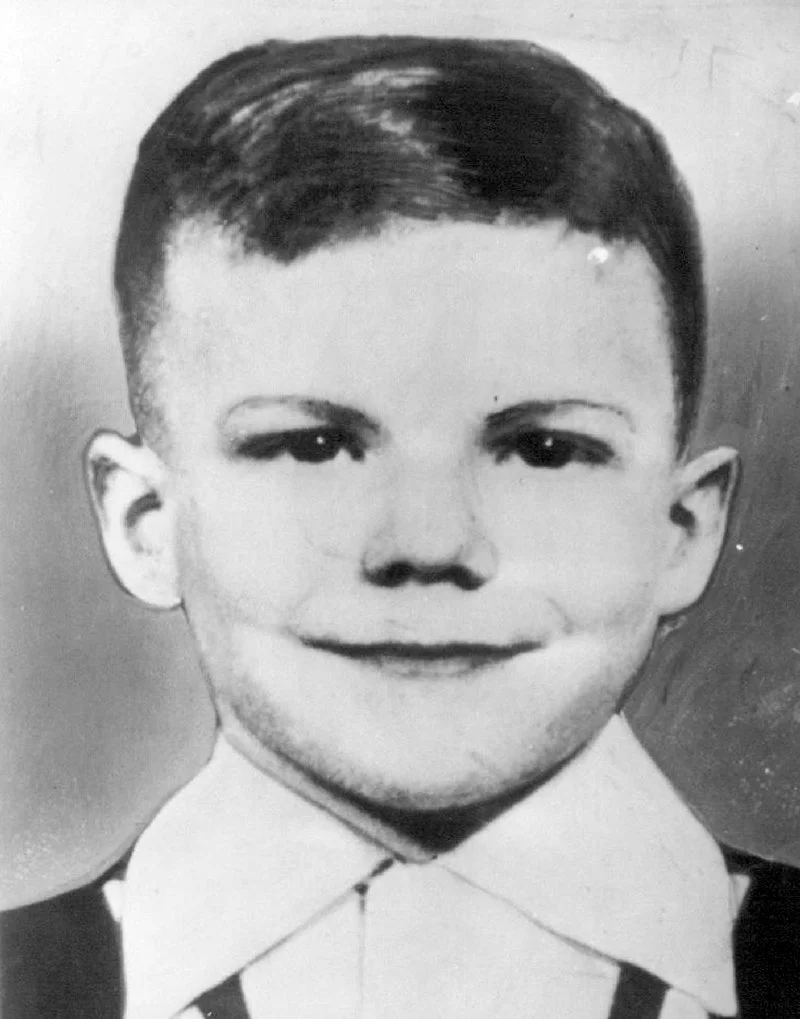The Story of Hallmark Cards
The Story of Hallmark CardsIf you were forwarded this email, click here to subscribe (it's free!) Read this story online | Sponsor this newsletter | Shop 📸
Hallmark Cards, Inc. is one of the most recognizable names in the greeting card industry, known for its role in shaping modern expressions of sentiment and celebration. Founded in Kansas City, Missouri, the company grew from a small postcard business into a global brand, influencing not only the way people connect but also the economic and cultural development of the city. Early Years: J.C. Hall and the Greeting Card Industry
The company’s origins trace back to Joyce Clyde "J.C." Hall, born in David City, Nebraska, in 1891. Raised in modest circumstances, Hall started selling postcards with his brothers, William and Rollie, in Norfolk, Nebraska. Recognizing the growing popularity of greeting cards, J.C. Hall moved to Kansas City in 1910 with a small inventory of postcards stored in two shoeboxes. He saw an opportunity to build a larger business in the expanding market of printed greetings.
By 1915, the business had grown, but a fire destroyed their inventory and left them in significant debt. Rather than giving up, the Hall brothers pivoted to a new concept—greeting cards with envelopes. This simple innovation provided a more private and thoughtful way for people to send messages, setting Hallmark apart from the traditional postcard industry. Innovation & Expansion
The company continued to introduce new ideas. In 1917, a shortage of traditional wrapping paper led to the use of decorative French envelope linings as an alternative. This accidental solution became the foundation of modern decorative wrapping paper, which is now an essential part of gift-giving traditions. In 1928, the company officially adopted the name "Hallmark," inspired by the quality certification used by London goldsmiths. The name reinforced the company’s commitment to high standards and craftsmanship. By 1944, Hallmark had introduced its famous slogan, "When you care enough to send the very best," further solidifying its reputation for quality.
Beyond greeting cards, Hallmark expanded into television. The launch of the Hallmark Hall of Fame in 1951 brought original storytelling to audiences nationwide, increasing the company’s influence in entertainment. Cementing a Legacy: The Hallmark Influence
Hallmark's growth also contributed to the development of Kansas City. Under J.C. Hall’s leadership, the company invested in local infrastructure, culminating in the creation of Crown Center in the 1960s. Located near Hallmark’s headquarters, Crown Center transformed the surrounding area into a major cultural and commercial district, featuring retail shops, dining, entertainment, and office space. J.C. Hall retired in 1966, and his son, Don Hall, took over leadership of the company. Under Don’s direction, Hallmark expanded its product offerings, introducing Keepsake Ornaments in the 1970s and launching greeting card lines designed for a wider range of cultural traditions.
J.C. Hall passed away in 1982 and was buried at Forest Hill Cemetery in Kansas City. His legacy extended beyond the company, as much of his estate—valued at approximately $100 million—was donated to charities focused on education, social services, and the arts. Additionally, he willed a portion of his stock to Hallmark employees through a profit-sharing and stock ownership plan. Today, Hallmark remains a major player in the greeting card industry, operating as a privately held company headquartered in Kansas City. The brand continues to be a leader in creative expression, celebrating life’s milestones and everyday moments with products that reach millions worldwide. This Week's Featured Home434 W 56th St, Kansas City, MO 64113
Realtors: interested in sponsoring this section? Just email me at hello@kcyesterday.com! Thanks for reading, Reader! What do you want to learn about next week? Reply and let me know! ps: did you know the Hallmark crown logo was inspired by a local church? |
Stories from the City - History of Kansas City
Join thousands of others and discover Kansas City's captivating history every week with the exclusive newsletter from KC Yesterday. Sign up now to unlock fascinating stories about the mafia, architecture, prohibition, sports, and everything in between!
The Story of Nabisco in the KC Crossroads If you were forwarded this email, click here to subscribe (it's free!) Read this story online | Sponsor this newsletter | Shop 📸 In September 1911, the Crossroads were forever changed when a grand celebration was held for the opening of Nabisco's (National Biscuit Company) newest and most advanced baking facility. Nabisco's grand opening in KC was met with a flurry of fanfare, drawing in guests from across the country. This seven-story, 200,000...
The Story of UMKC If you were forwarded this email, click here to subscribe (it's free!) Read this story online | Sponsor this newsletter | Shop 📸 The University of Missouri–Kansas City (UMKC) traces its origins to October 1, 1933, when nearly 2,000 Kansas Citians gathered along Brush Creek to celebrate the opening of the University of Kansas City (UKC). Its founders envisioned an institution that would make higher education accessible to local students unable to travel far from home. The...
The Story of the Bobby Greenlease's Kidnapping If you were forwarded this email, click here to subscribe (it's free!) Read this story online | Sponsor this newsletter | Shop 📸 Bobby Greenlease. Courtesy Kansas City Star On the morning of September 28, 1953, a woman arrived at the French Institute of Notre Dame de Sion in Kansas City, Missouri, and told a nun she was the aunt of six-year-old student Robert “Bobby” Greenlease. Claiming Bobby’s mother had suffered a heart attack, the...







